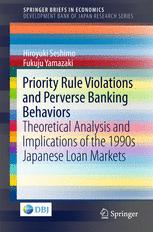

Most ebook files are in PDF format, so you can easily read them using various software such as Foxit Reader or directly on the Google Chrome browser.
Some ebook files are released by publishers in other formats such as .awz, .mobi, .epub, .fb2, etc. You may need to install specific software to read these formats on mobile/PC, such as Calibre.
Please read the tutorial at this link: https://ebookbell.com/faq
We offer FREE conversion to the popular formats you request; however, this may take some time. Therefore, right after payment, please email us, and we will try to provide the service as quickly as possible.
For some exceptional file formats or broken links (if any), please refrain from opening any disputes. Instead, email us first, and we will try to assist within a maximum of 6 hours.
EbookBell Team

0.0
0 reviewsThis book theoretically and empirically explores why Japanese banks engaged in seemingly contradictory behaviors in the 1990s, namely, the credit crunch and evergreening, i.e., inefficient additional lending. A credit crunch occurs when banks are unwilling to finance good and efficient projects. Evergreening implies that banks reluctantly lend additional money to poorly performing and financially vulnerable firms. The authors hypothesize that these practices stemmed from violation of the absolute priority rule (APR) by creditors, thus making it possible to explain this seemingly contradictory banking behavior in a consistent way.
In Japan, the APR has often been violated legally by courts and some governmental acts. Examples from the 1990s involve legal abuse in the form of short-term tenancy protection (tanki chinshaku ken) and political intervention in the liquidation of Housing Loan Companies, or Ju-sen. The Supreme Court of Japan has issued critical decisions leading to serious violations of APR in the early 1990s. Evidence provided here supports theoretical results. Empirical testing for a significant difference in banking behavior before and after the Court decision using data from Japanese firms in the 1980s and 1990s found that theoretical arguments were empirically supportable in the last half of the 1980s and through the 1990s. Finally, based on their analysis, from the theoretical point of view the authors consider the optimal legal scheme to achieve the best assessment of initial and additional lending in light of the legal reform of the 2000s.